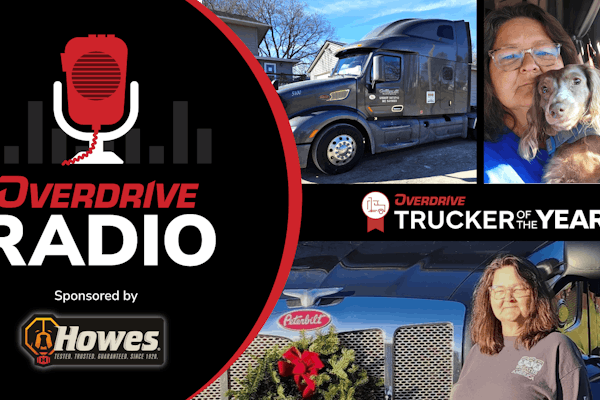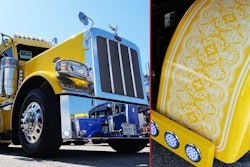Wearing the proper personal protective gear can save you pain, time and money
By Misty Bell
An old song goes, “Head and shoulders, knees and toes,” and when it comes to personal safety wear, there’s little difference. OSHA requirements for general workplace safety include requirements for protecting head, eyes, hands and feet.
A trucker may face a variety of environments depending on the freight and the needs of the client, so it’s sometimes hard to know what types of safety wear to carry in the truck. Following is a breakdown of the protective wear that should keep you safe in most situations.
Head
Many truckers will at some point be on a construction or industrial site where a hard hat is required. OSHA states that employers are responsible for making sure employees wear a “protective helmet when working in areas where there is potential for injury to the head from falling objects.”
Now, a company is not going to let you onto its site without the proper protective helmet or hard hat, but it’s reassuring to know exactly where that helmet has been. The best way to do that is by carrying your own hard hat with you.
More than 100,000 work-related head injuries occur annually, and according to the U.S. Bureau of Labor Statistics (BLS), 84 percent of those injured were not wearing a protective helmet.
Eyes
In 2002, according to the BLS, there were 42,286 work-related eye injuries that resulted in time away from the job. Of the different occupations that reported these incidents, “truck driver” came in third with 1,695 (or 4 percent). This put them ahead of machine operators, construction workers and mechanics.
For eyewear, OSHA mandates workers wear protective eye gear if they may be exposed to “eye or face hazards from flying particles, molten metal, liquid chemicals, acids or caustic liquids, chemical gases or vapors, or potentially injurious light radiation.” The eye gear also must provide side protection when there is a hazard of flying objects, and for those who wear contacts, the eyewear should incorporate the prescription in the design or otherwise not interfere with the prescription.
As for how to know what type of eyewear to purchase, look for safety glasses or goggles approved by the American National Standards Institute.
Hands
A driver’s hands are important, so you certainly don’t want an avoidable cut or burn to put you out of commission for any period of time.
OSHA requires “appropriate hand protection” for employees exposed to potentially harmful substances or materials.
The phrase “appropriate hand protection” leaves some room for debate, but when in doubt, wear the gloves. A study performed by the Journal of Occupational and Environmental Hygiene indicates that a worker wearing gloves has, on average, a 60 percent less chance of injury.
And considering that according to Contractor Tools and Supplies 40 percent of recordable injuries are to the hand, gloves can really reduce your odds of an on-the-job injury.
When purchasing gloves, look for durable material that suits the type of work you will be doing. For most truckers who needs gloves, this will involve loading and unloading. Traditional leather gloves may do the trick, and newer synthetic-material gloves also provide a heavy-duty option.
Feet
The safe shoes topic is a bit of a double whammy for truckers, because not only can impact injuries occur to feet, there’s also the potential for slipping and falling. BLS reported more than 303,000 slip, trip and fall injuries in 2000 and more than 180,000 foot-related injuries in 1997.
The OSHA requirement for foot protection states that protective footwear should be used anywhere there is danger of foot injuries due to “falling or rolling objects, or objects piercing the sole, and where such employees’ feet are exposed to electrical hazards.”
ANSI sets standards for shoes and boots. A typical ANSI rating could be 1-75 C-25. This means the toe will withstand 175 lb.-ft. of impact and 2,500 pounds of compression.
Staying safe on the side
Visibility is important for safety during those unexpected roadside stops.
For the trucker, the rig is the workplace, and sometimes the rig decides to make an unanticipated roadside stop. During those times you have to get out of your truck in the right of way, it’s important other motorists are able to see you.
One of the newest hi-vis safety lines available is from Wolverine. “Our line of safety wear goes just beyond your standard-issue safety vest,” says Marshall Davis, director of marketing. “I think a lot of truckers are aware that there’s a safety vest out there. We offer a variety of styles for people who need to wear hi-vis (T-shirts, outerwear, etc.).”
Wolverine’s products feature bright mesh material and hi-vis taping from 3M. “It’s a hi-vis, retro-reflective taping that 3M manufactures and stands behind,” Davis says. “It’s a quality issue for us. We want to make sure that our retro-reflective taping stands up. Some other taping that’s not branded doesn’t stand up through washing and things like that









